Who should get this

If you work at a computer for long periods of time, a monitor arm can help prevent back and neck pain by positioning the screen in an ergonomically ideal location. Alan Hedge, an ergonomics expert and director of the Human Factor and Ergonomics program at Cornell University, recommends that the top of a screen be about 2 to 3 inches above eye level, because human eyes see more below the horizon line than above. Monitor arms are also helpful if you alternate between sitting and standing at your desk or share a workstation with people of varying height.
How we picked and tested
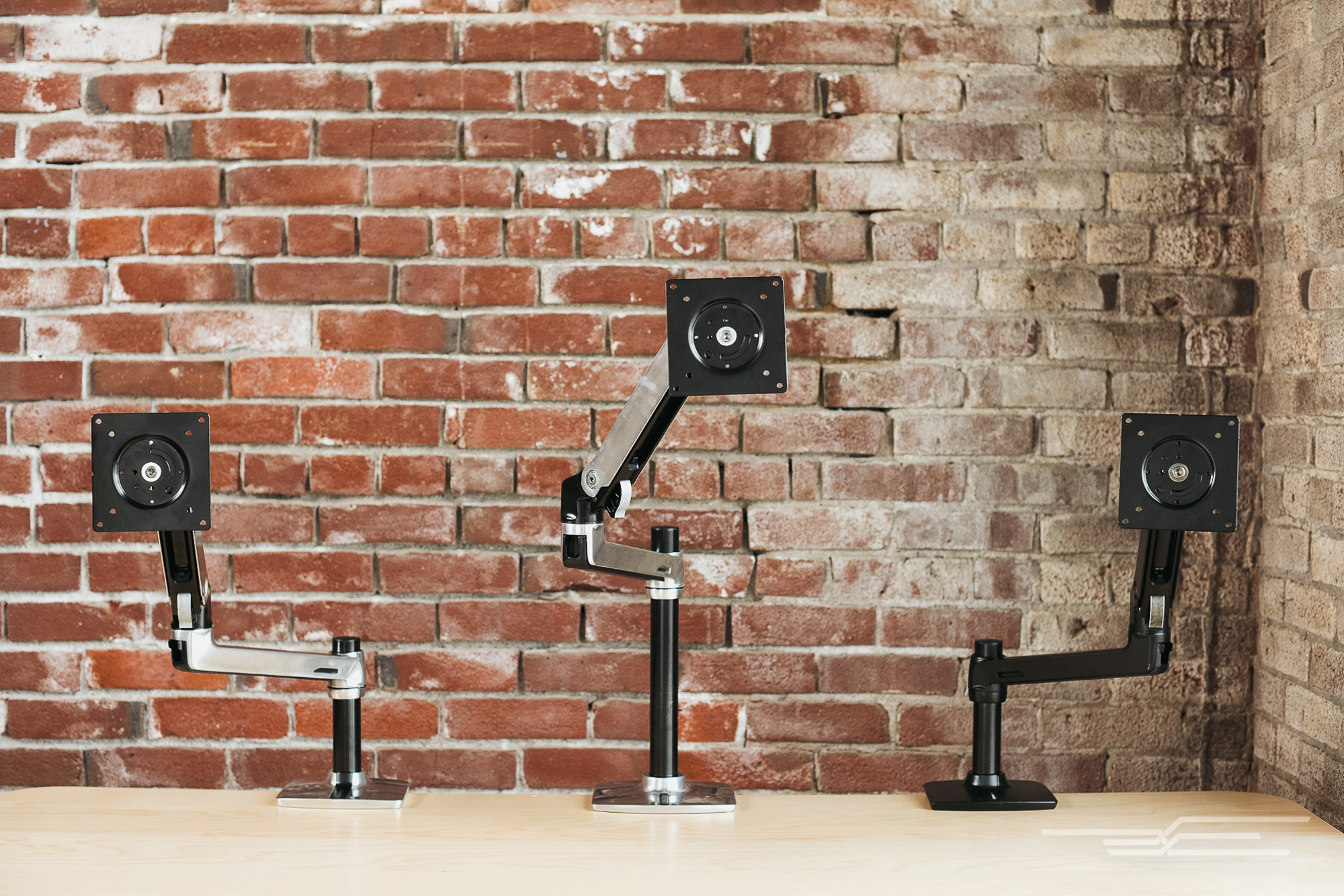
Everyone has a different body and a different workstation, so the wider range of motion a monitor arm has, the better. A good monitor arm should support VESA mounts, the most common standard supported by most displays. Monitor arms must also sturdily attach to a wide range of desks and include cable-management options. We also like to see clear assembly instructions and a strong warranty.
We tested by assembling each monitor arm, attaching each arm to a Dell UltraSharp U2715H (our previous pick for the best 27-inch monitor), and mounting each to a desk. For each arm we assessed the setup process, sturdiness, and the range of movement, and we had people of varying heights use and adjust the monitor in both sitting and standing positions.
Our pick: AmazonBasics Single Monitor Arm
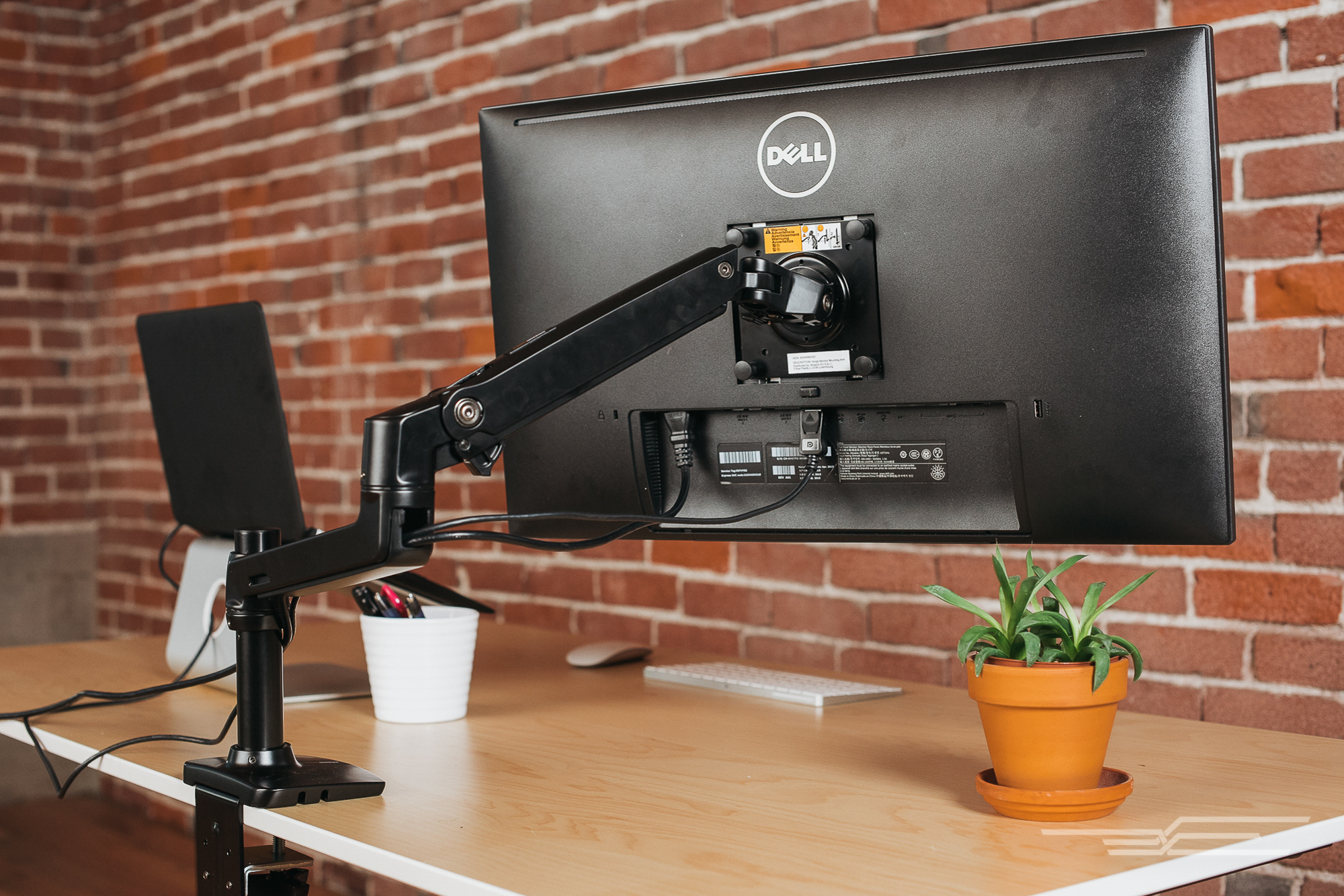
The AmazonBasics Single Monitor Display Mounting Arm is the monitor arm we recommend for most people because it’s the most adjustable, the easiest to set up, and the sturdiest arm for the price. It has 13 inches of height adjustment, extends outward up to 25 inches, and can tilt 70 degrees backward and 5 degrees forward. You can also pan and rotate a full 360 degrees for vertical alignment. It comes with a 1-year warranty covering damage to the arm, but not damage to your monitor.
The AmazonBasics desk clamp and VESA mounting plate are both sturdy, an absolute must for an arm designed to hold an expensive monitor. The wide, heavy desk clamp is easy to tighten, and in our tests, jostling the base didn’t move the arm at all.
We don’t love the AmazonBasics Single Monitor Arm’s cable-management system, which consists of a flimsy piece of plastic that hooks onto the underside of the lower arm plus zip ties that hook cables under the top portion of the arm. If the AmazonBasics arm’s cable management doesn’t cut it for you, we recommend the Velcro ties we describe in our home-office furniture and supplies guide.
Runner-up: Ergotron LX Monitor Arm
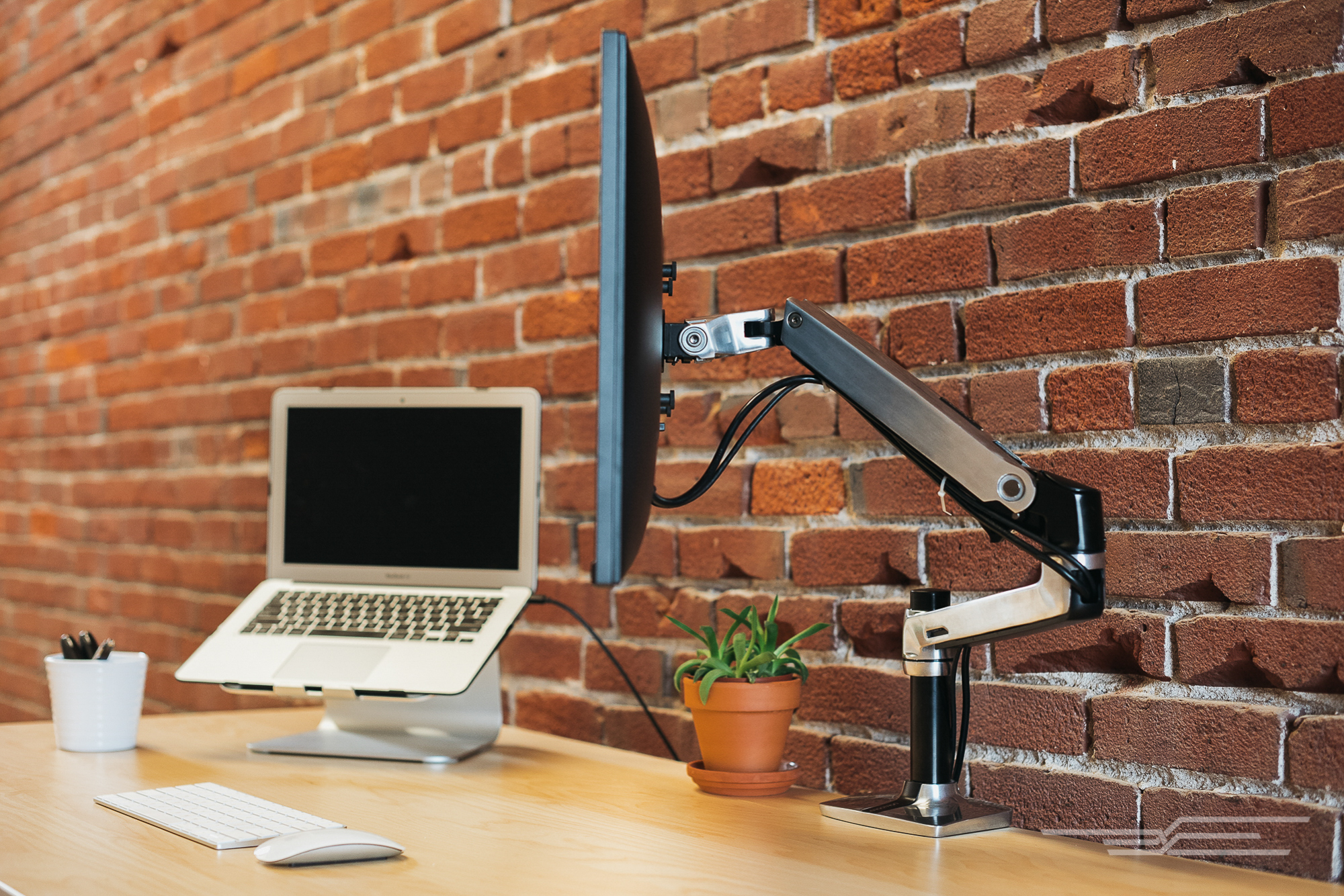
If our pick is sold out or you don’t mind spending around $35 more for a monitor arm with a longer warranty, we also like the Ergotron LX Desk Mount LCD Monitor Arm. The Ergotron LX is nearly identical to the AmazonBasics aside from the polished aluminum finish on the arm and base. The Ergotron also has a considerably longer warranty (10 years, versus the one-year warranty on the AmazonBasics). Beyond those differences, however, the Ergotron is equally sturdy, adjustable, and easy to assemble, which is why it’s not our top pick: the AmazonBasics has the same features for a lower price.
A sleeker-looking option: Fully Jarvis Monitor Arm

If you want a nicer-looking monitor arm and are willing to put up with a slightly more difficult assembly process, get the Fully Jarvis Monitor Arm. It’s one of the best-looking monitor arms we tested; it comes in white, black, and silver. The Jarvis has a 13-inch vertical range, can extend 24 inches side to side, tilt 90 degrees, rotate 180 degrees, and pan 360 degrees. It also maintains the same VESA compatibility as our other picks, and comes with a five-year warranty covering damage to the arm only.
The Jarvis was slightly more difficult to set up than the AmazonBasics arm, even though Fully released a video and improved the setup process since the last version we tested. In our tests, we needed a second person to help mount the monitor onto the arm, and thought balancing the arm while assembling the desk clamp was a bit awkward.
For tall people at a sit/stand desk: Ergotron LX Tall Pole Monitor Arm
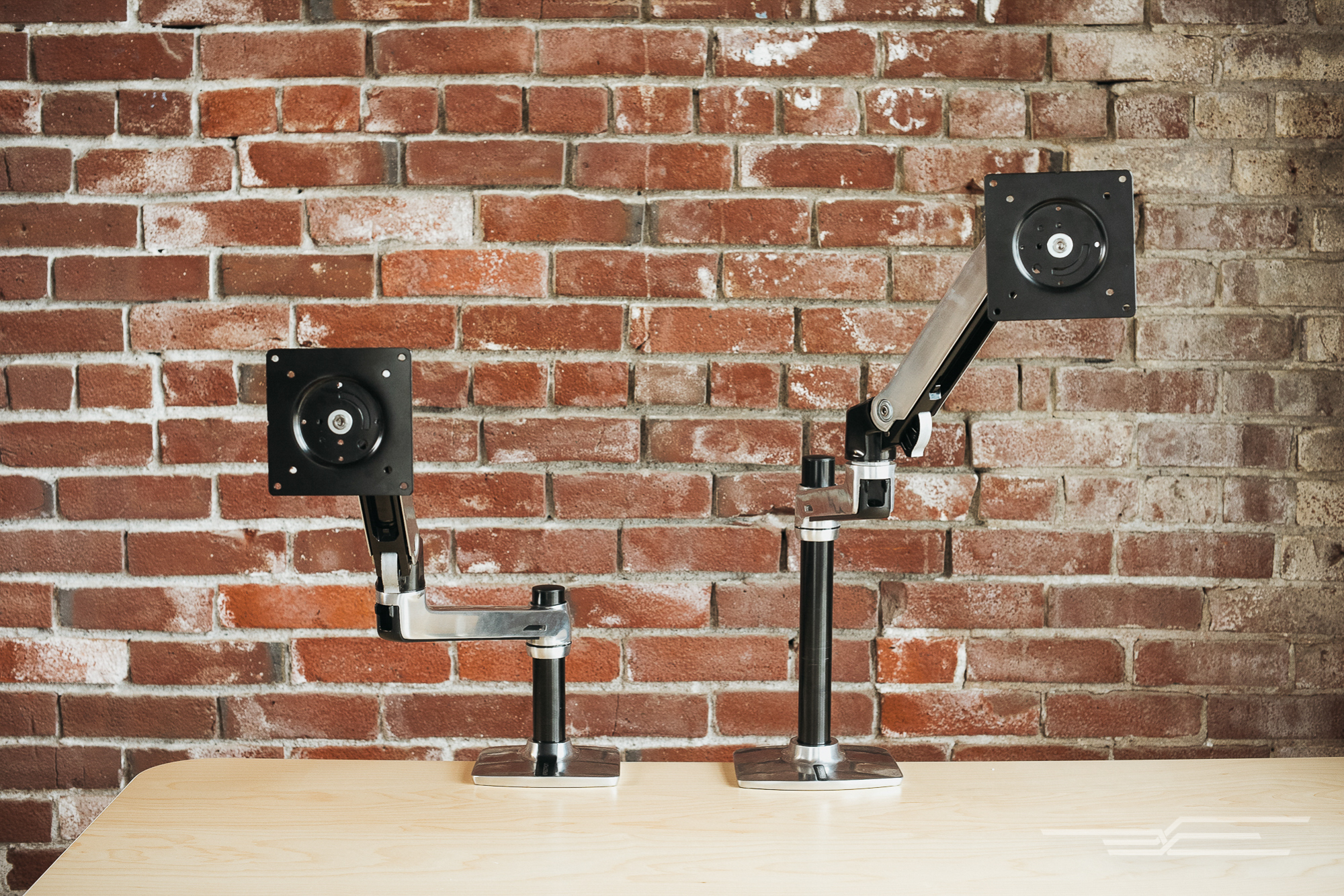
If you’re over 6 feet tall and need a monitor arm to use with an adjustable standing desk, we recommend the Ergotron LX Desk Mount LCD Monitor Arm Tall Pole. In our tests, we found that the 7-inch pole in the regular LX arm wasn’t quite tall enough to properly position a monitor for tall people, and the 13¼ inch pole in the extra-height version was necessary to achieve ergonomically ideal monitor heights. The LX Tall Pole is just as sturdy and easy to set up as the regular Ergotron arm; the two arms are identical aside from the pole length.
For dual-monitor setups: AmazonBasics Dual Side-by-Side Monitor Arm
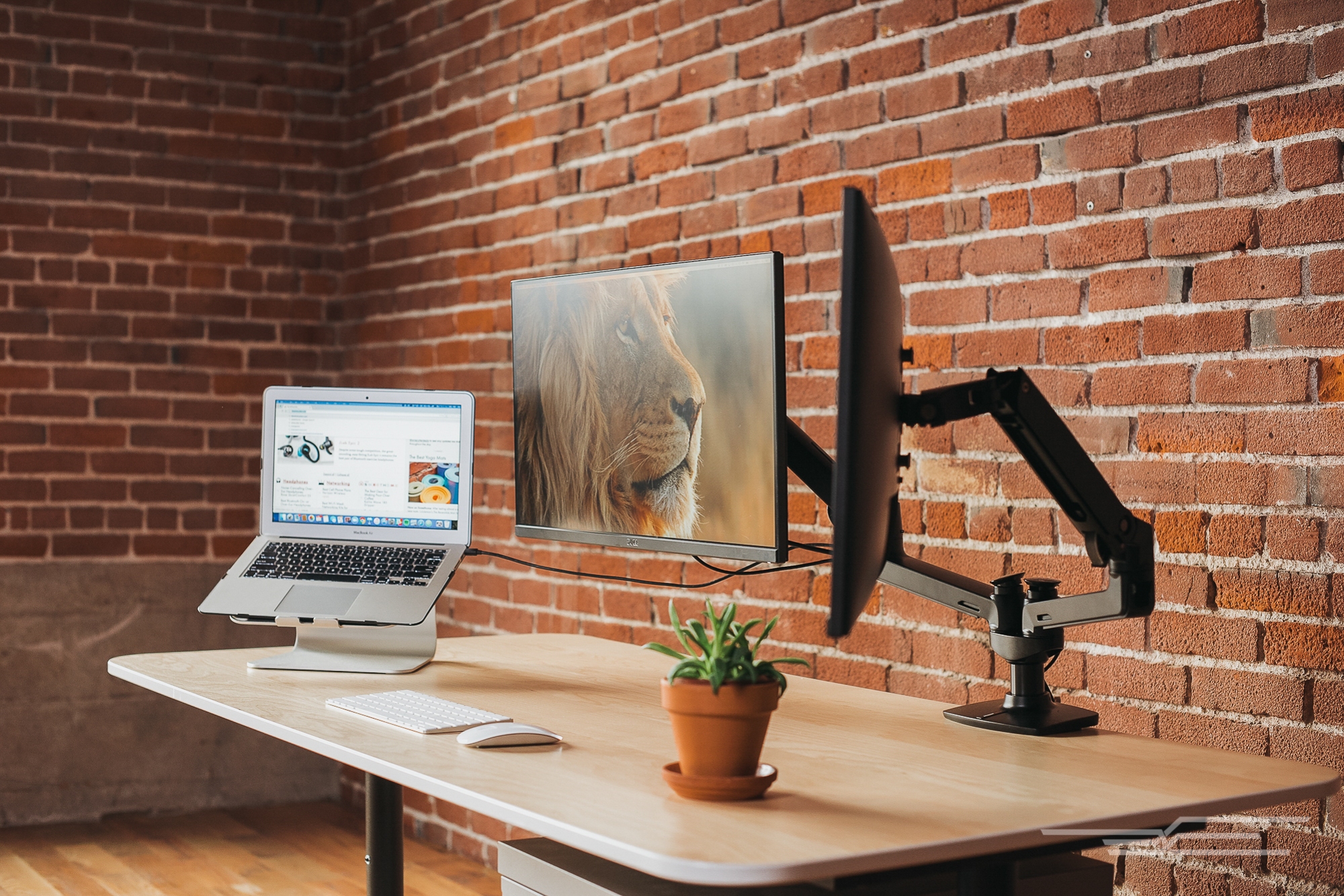
We recommend the AmazonBasics Dual Side-by-Side Monitor Display Mounting Arm for anyone who needs a dual monitor arm. As with the single-arm version, the AmazonBasics dual-arm model is sturdy and easy to adjust, and it has an impressive vertical range. It can support two 27-inch monitors and 40 pounds total. It offers the same features as the Ergotron dual arm, but it’s cheaper and offers just a one-year warranty (Ergotron offers a 10-year plan).
The AmazonBasics dual arm can adjust 13 inches vertically, extend 25 inches side to side, tilt 70 degrees backward and 5 degrees forward, and rotate 360 degrees. In our tests, both arms on the AmazonBasics held tension and were easily adjustable, moving from side to side, forward and back, and even vertically to accommodate for a range of dual-monitor setups. This model doesn’t allow for stacking, however.
This guide may have been updated by The Wirecutter. To see the current recommendation, please go here.
Note from The Wirecutter: When readers choose to buy our independently chosen editorial picks, we may earn affiliate commissions that support our work.





